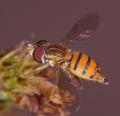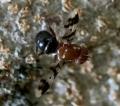Diptera.info :: Identification queries :: Diptera (adults)
Who is here? 1 guest(s)
|
Anthomyiidae sp.
|
|
| Robert Heemskerk |
Posted on 16-03-2007 00:32
|
|
Member Location: Amsterdam, Netherlands Posts: 2082 Joined: 17.10.05 |
hello flyforum, I think this fly came from some willowflowers, it's got a lot of pollen. When I look at the Anal-veins, they reach the border of the wing. That meant that this is Anthomyiidae sp., isn't it? And Further identification must be difficult from pictures..? Robert Heemskerk attached the following image: 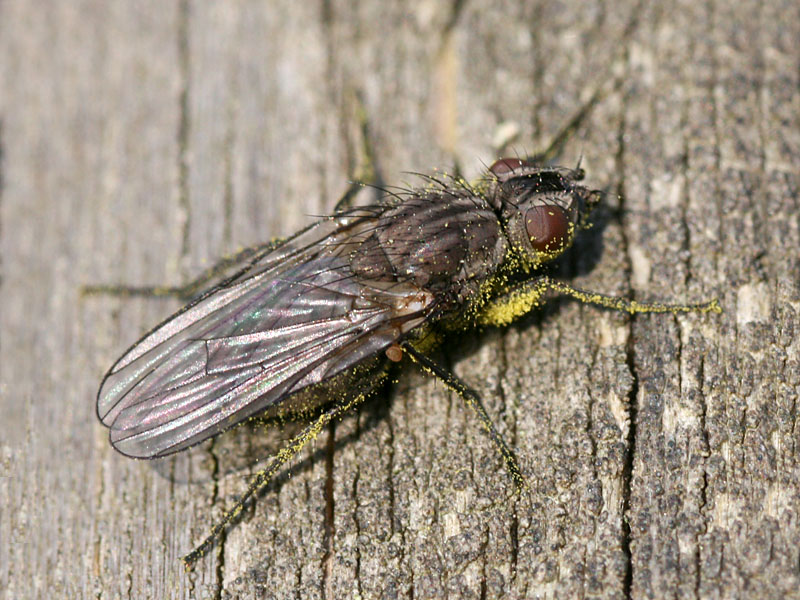 [176.61Kb] |
| Robert Heemskerk |
Posted on 16-03-2007 00:33
|
|
Member Location: Amsterdam, Netherlands Posts: 2082 Joined: 17.10.05 |
Anal veins reach the border of the wing
Robert Heemskerk attached the following image: 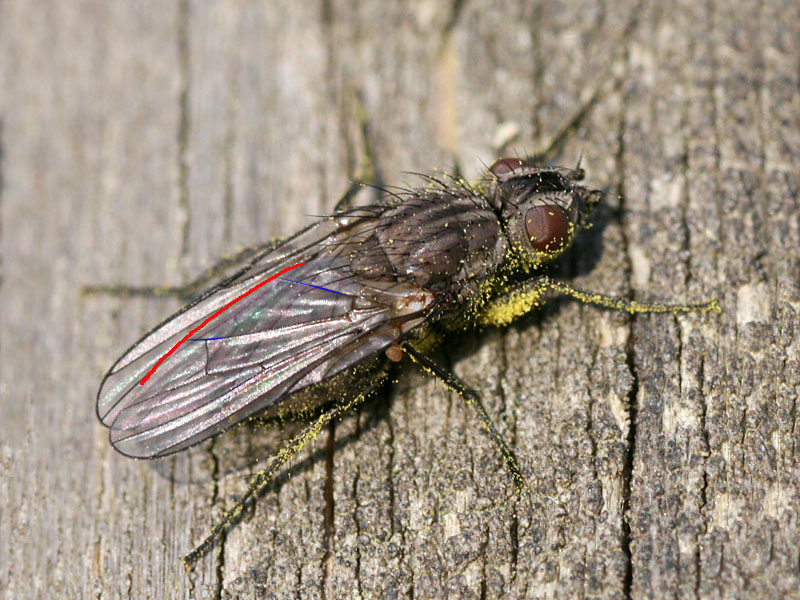 [178.43Kb] Edited by Robert Heemskerk on 16-03-2007 00:33 |
| Robert Heemskerk |
Posted on 16-03-2007 00:34
|
|
Member Location: Amsterdam, Netherlands Posts: 2082 Joined: 17.10.05 |
picture of the head
Robert Heemskerk attached the following image: 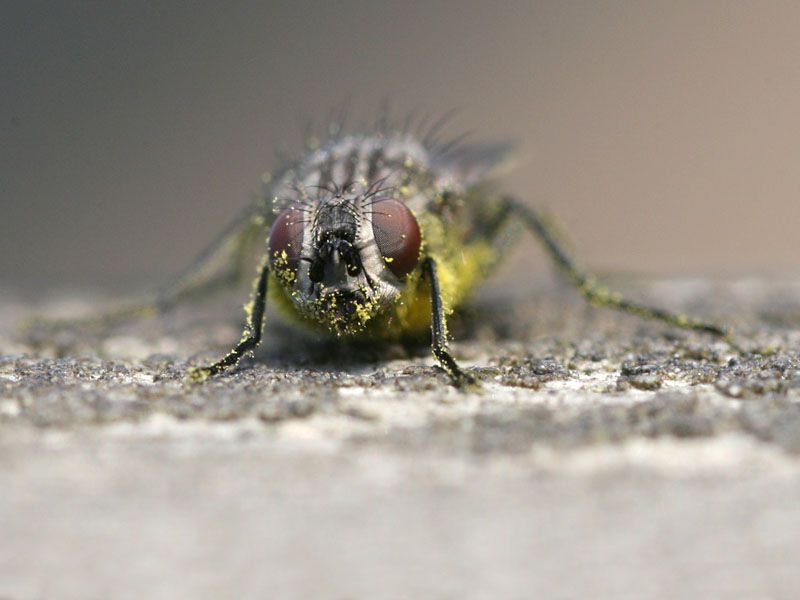 [86.3Kb] Edited by Robert Heemskerk on 16-03-2007 00:34 |
| Robert Heemskerk |
Posted on 16-03-2007 00:35
|
|
Member Location: Amsterdam, Netherlands Posts: 2082 Joined: 17.10.05 |
picture of the fly and the nice wheater
Robert Heemskerk attached the following image: 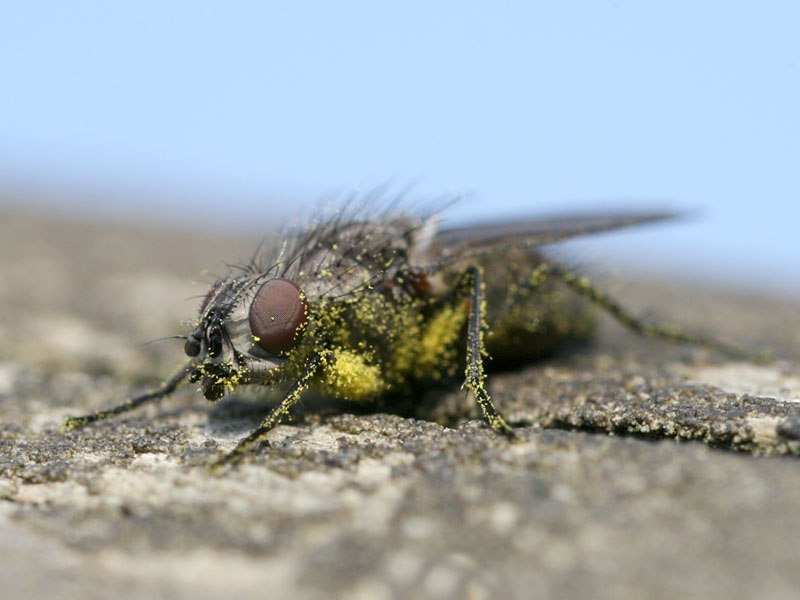 [93.88Kb] Edited by Robert Heemskerk on 16-03-2007 00:35 |
| Nikita Vikhrev |
Posted on 16-03-2007 11:37
|
|
Member Location: Moscow, Russia Posts: 9426 Joined: 24.05.05 |
Robert, I think Anthomyiidae female is correct. On 3-d image you can see interfrontal setas. Nikita Nikita Vikhrev - Zool Museum of Moscow University |
|
|
|
| Kahis |
Posted on 17-03-2007 16:29
|
|
Member Location: Helsinki, Finland Posts: 1999 Joined: 02.09.04 |
It's a female Egle. Very common and numerous on willow catkins. The protruding mouth edge and large palpi are characteristic for this genus among the few spring anthomyiid species.
Kahis |
| Robert Heemskerk |
Posted on 18-03-2007 11:33
|
|
Member Location: Amsterdam, Netherlands Posts: 2082 Joined: 17.10.05 |
Thank you Kahis. The Dutch specieslist give me two Egle's; 1. Egle ciliata 2. Egle parva Is it possible to identify this fly any further from this picture? Robert  |
| Kahis |
Posted on 18-03-2007 12:11
|
|
Member Location: Helsinki, Finland Posts: 1999 Joined: 02.09.04 |
It's probably E. ciliata. That said, I'm very surprised you have only two species in the Netherlands  This genus has never been too popular - it's frankly rather boring & the smaller species are very soft and don't keep very well when pinned - I guess you could find at least 2-3 additional species in the country. This genus has never been too popular - it's frankly rather boring & the smaller species are very soft and don't keep very well when pinned - I guess you could find at least 2-3 additional species in the country.
Kahis |
| Nikita Vikhrev |
Posted on 18-03-2007 13:56
|
|
Member Location: Moscow, Russia Posts: 9426 Joined: 24.05.05 |
As far as I understand the situation Egle with 4 postsut dc (which is your case) may be either E. ciliata or E. brevicornis. According Fauna Europea both species do not recorded, for example, also for Russia, with means only that no material from Russia was so far investigated by proper expert... Nikita Nikita Vikhrev - Zool Museum of Moscow University |
|
|
|
| Robert Heemskerk |
Posted on 18-03-2007 17:19
|
|
Member Location: Amsterdam, Netherlands Posts: 2082 Joined: 17.10.05 |
I try to find the 4 postsut dc, but I am not familiar with these. I cannot find them in my book.. so what are they? and where can I find these?  |
| Kahis |
Posted on 18-03-2007 20:01
|
|
Member Location: Helsinki, Finland Posts: 1999 Joined: 02.09.04 |
Postsutural dorsocentrals. These are the setae along the outer margin of the pair of pale stripes on the back of the fly. The suture is the weak transverse line crossing the thorax. There are 4 postsutural dc setae on this fly (ie 4 dorsocentrals behind the suture) - and 2-3 presutural dc, but those are not important in this particular case.
Kahis |
| Nikita Vikhrev |
Posted on 18-03-2007 20:45
|
|
Member Location: Moscow, Russia Posts: 9426 Joined: 24.05.05 |
or illustration...
Nikita Vikhrev attached the following image:  [149.42Kb] Nikita Vikhrev - Zool Museum of Moscow University |
|
|
|
| Jump to Forum: |


